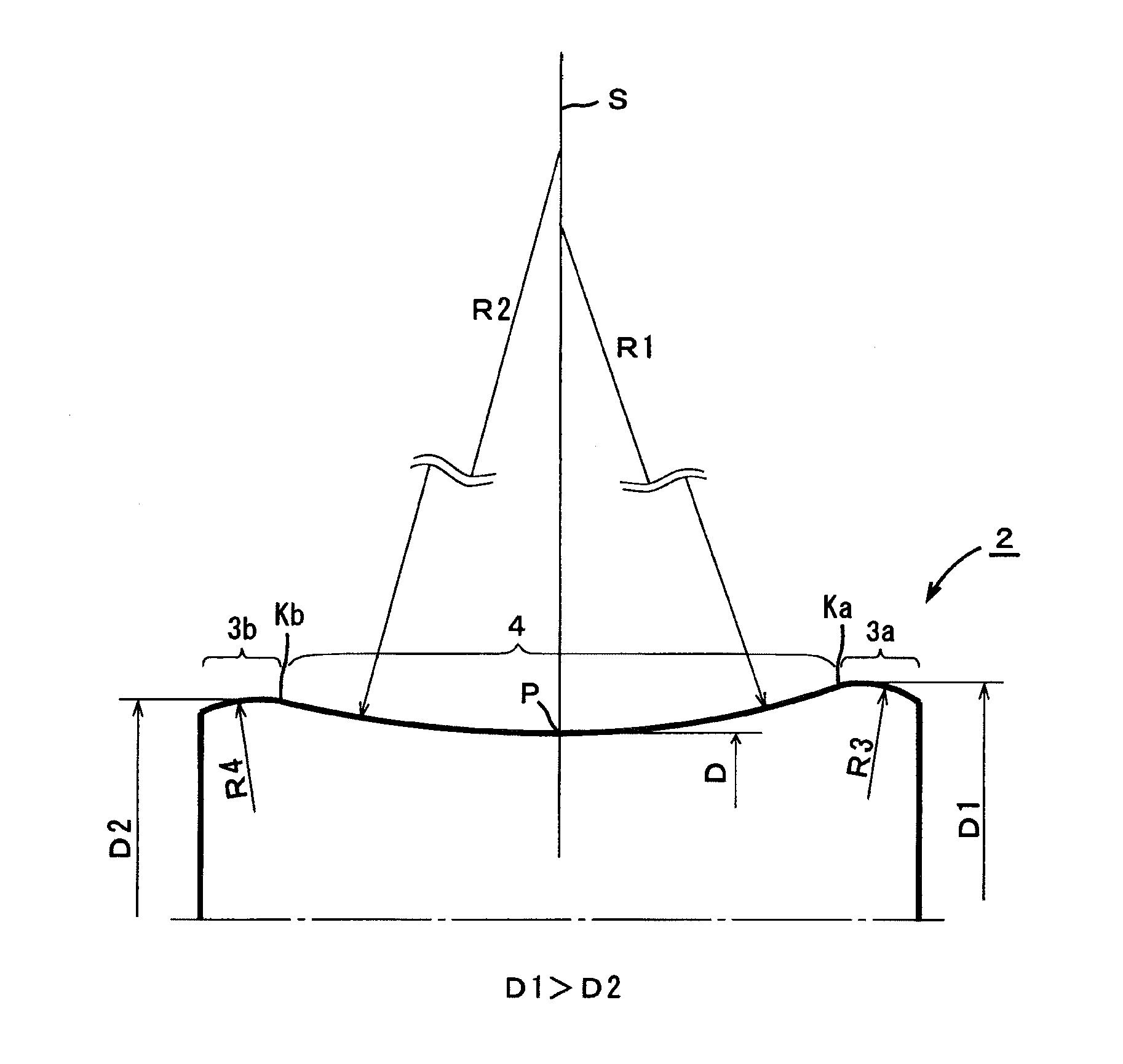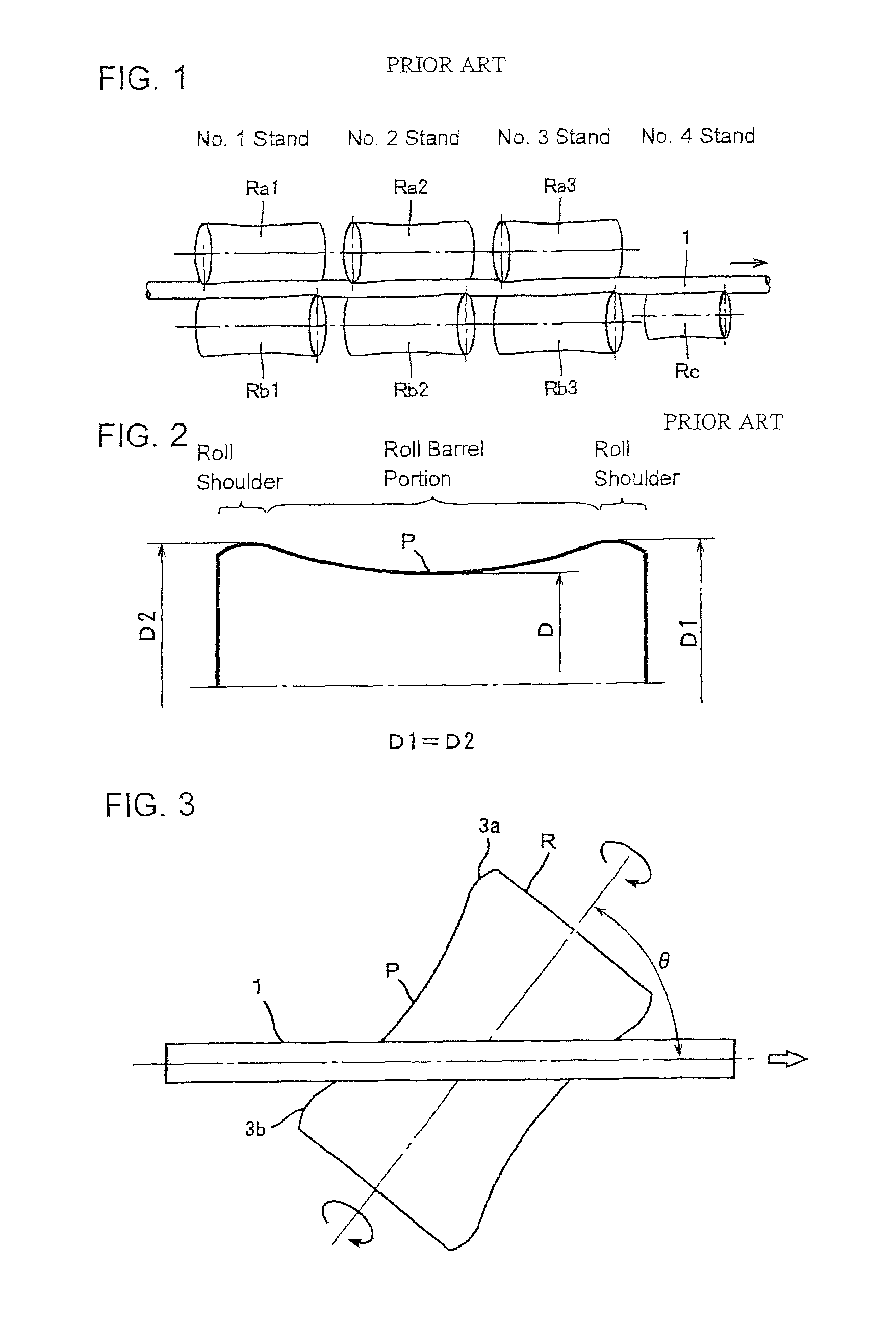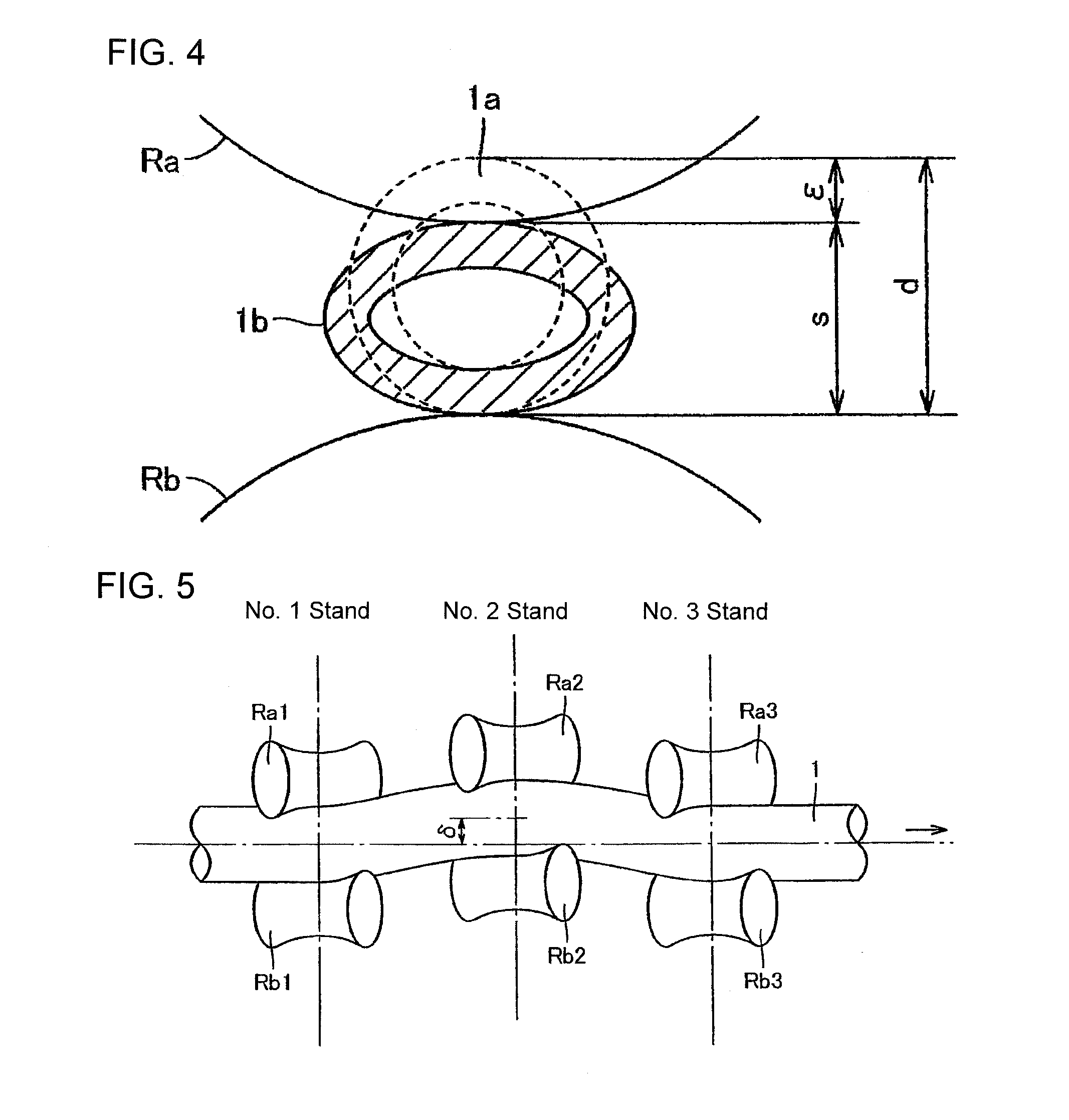Method for straightening tube and straightening roll
a technology of straightening roll and tube, which is applied in the direction of metal rolling stand, metal rolling arrangement, manufacturing tools, etc., can solve the problems of deteriorating productivity, requiring complex and highly accurate control, and not being able to straighten the tube end portion, etc., to achieve enhanced straightening effect, reduce the occurrence of leading-end deformation, and reduce the effect of offsetting
- Summary
- Abstract
- Description
- Claims
- Application Information
AI Technical Summary
Benefits of technology
Problems solved by technology
Method used
Image
Examples
example 1
[0078]Straightening of a tube was performed with a carbon steel tube (material corresponding to API standard: X52) having an outer diameter of 34.0 mm and a wall thickness of 2.3 mm as a workpiece by applying the straightening method of the present invention to investigate the effect of suppressing the leading-end deformation of a tube end portion. It is noted that for comparison purpose, similar investigation was conducted for the case where an ordinary symmetric roll was used.
[0079]The straightener used was a 2-2-2-1 type straightener. Table 1 shows roll conditions. The roll condition 1 in Table 1 shows a case where symmetric rolls were used for all stands, and the roll condition 2 shows a case where an asymmetric roll was used for upper and lower rolls of No. 2 stand and No. 3 stand.
[0080]
TABLE 1No. 1No. 2No. 3No. 4StandStandStandStandRollUpperSymmetricSymmetricSymmetric—condi-rollrollrollrolltion 1LowerSymmetricSymmetricSymmetricSymmetricrollrollrollrollrollRollUpperSymmetricAsy...
example 2 to example 4
[0089]In commercial operations, carbon steel tubes (material corresponding to API standard: L80-1) each having an outer diameter of 139.7 mm and a wall thickness of 7.72 mm were straightened by applying the straightening method of the present invention to investigate the straightening rate of tested tubes in which bends had not been sufficiently straightened out and bends remained even after the straightening (rate of bend defective). When performing straightening, taking into consideration of the investigation results obtained in Example 1, test was conducted in advance to set straightening conditions (see Table 4) where leading-end deformation of a tube end portion would not occur. Moreover, for the purpose of comparison, investigation results of the rate of bend defective in an operation (commercial operation) before the present invention was applied, that is, investigation results in the case where symmetric rolls were used to perform straightening are listed as well.
[0090]Table...
example 5
[0100]Straightening of a tube was performed with a carbon steel tube (material corresponding to API standard: L80-1) having an outer diameter of 139.7 mm, a wall thickness of 7.72 mm, and a length of 6000 mm as the workpiece by applying the straightening roll of the present invention to investigate the effect on suppressing the leading-end deformation of a tube end portion after straightening. Furthermore, for comparison purpose, similar investigation was conducted for the case where an ordinary symmetric roll was used. The number of steel tubes subjected to the test was 350.
[0101]The straightener used was a 2-2-2-1 type straightener. Table 7 shows roll conditions and straightening setup conditions (crush amount and offset amount). Inventive Example in Table 7 is the case where an asymmetric roll (CR2 / CR1=1.05 to 1.15, (D1−D2) / d=0.02 to 0.1) was applied to the upper and lower rolls of No. 1 to No. 3 stands. The Comparative Example is the case where a symmetric roll (CR2 / CR1=1.00, (D...
PUM
| Property | Measurement | Unit |
|---|---|---|
| thickness | aaaaa | aaaaa |
| outer diameter | aaaaa | aaaaa |
| height | aaaaa | aaaaa |
Abstract
Description
Claims
Application Information
 Login to View More
Login to View More - R&D
- Intellectual Property
- Life Sciences
- Materials
- Tech Scout
- Unparalleled Data Quality
- Higher Quality Content
- 60% Fewer Hallucinations
Browse by: Latest US Patents, China's latest patents, Technical Efficacy Thesaurus, Application Domain, Technology Topic, Popular Technical Reports.
© 2025 PatSnap. All rights reserved.Legal|Privacy policy|Modern Slavery Act Transparency Statement|Sitemap|About US| Contact US: help@patsnap.com



